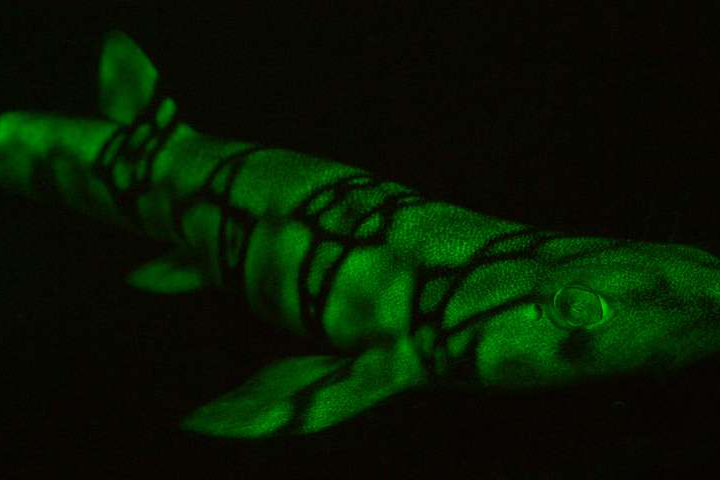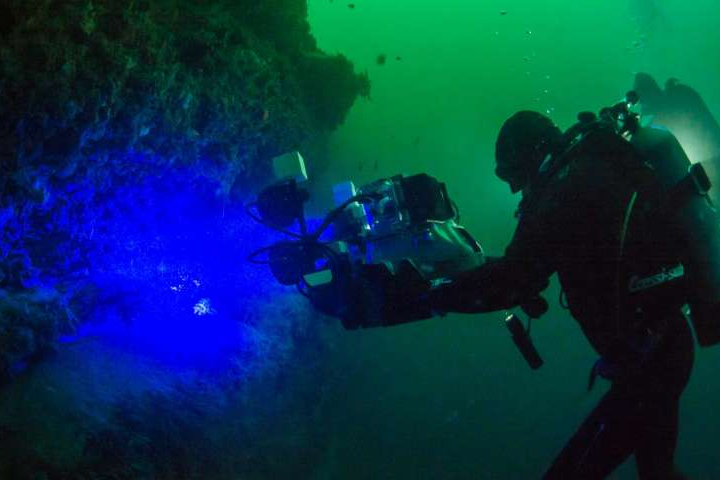
By using a technique known as microspectrophotometry to learn more about shark vision, the AMNH team discovered that long rod pigments in these sharks’ eyes are what allow the species to see in dark environments. With this information, they created a shark-eye camera that captures what a shark might see. Expeditions to observe the sharks in their native habitat brought the researchers to depths of 100 feet underwater. They used high-intensity blue lighting to mimic the biofluorescence of deep-water sharks, and then used the shark-eye camera to record any responses from other sharks swimming nearby. Although there was an underwater light show taking place, the glow-in-the-dark display was effectively invisible to humans.
Scientists believe that bioluminescence in sharks (and other glowing underwater lifeforms) takes place because the creatures absorb the remaining blue light at depths of the ocean where most visible light has already been absorbed by huge quantities of water above it. Then, species like catsharks and swellsharks re-emit the light they absorbed in bright green flashes, which only certain species can see. “Some sharks’ eyes are 100 times better than ours in low-light conditions,” said David Gruber, an AMNH research associate who went on the deep-water excursions.
Armed with their custom-built shark-eye camera, the AMNH team was able to see the underwater light show and also to experience how bioluminescent sharks actually increase their bright green glow as they get deeper underwater. At 100 feet below the surface, the researchers were only at the top of a range of natural habitation for the sharks they were studying. “But that’s where they’ve been living for 400 million years, so their eyes have adapted well to that dim, pure-blue environment,” said Gruber. Scientists think it’s likely that sharks have evolved to use this variable glow to communicate with each other, since they are uniquely qualified to see the glow where they live and they seem to be able to control its intensity.



